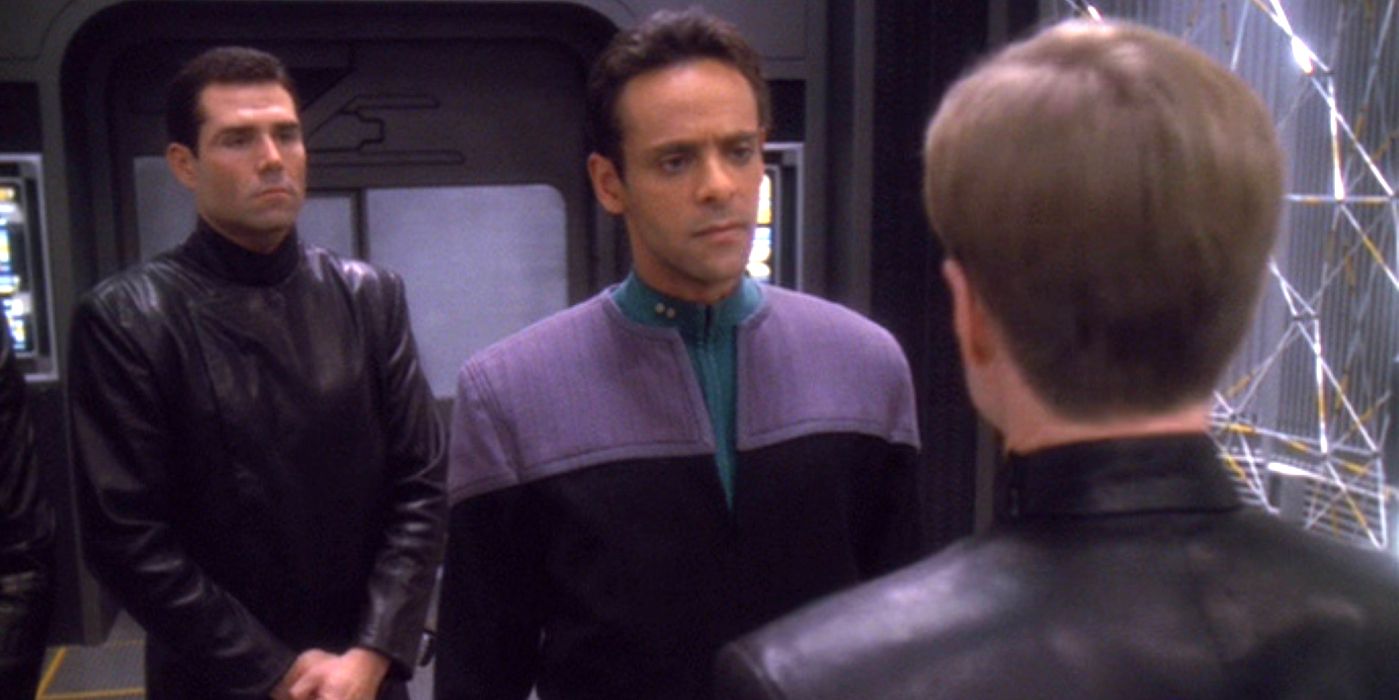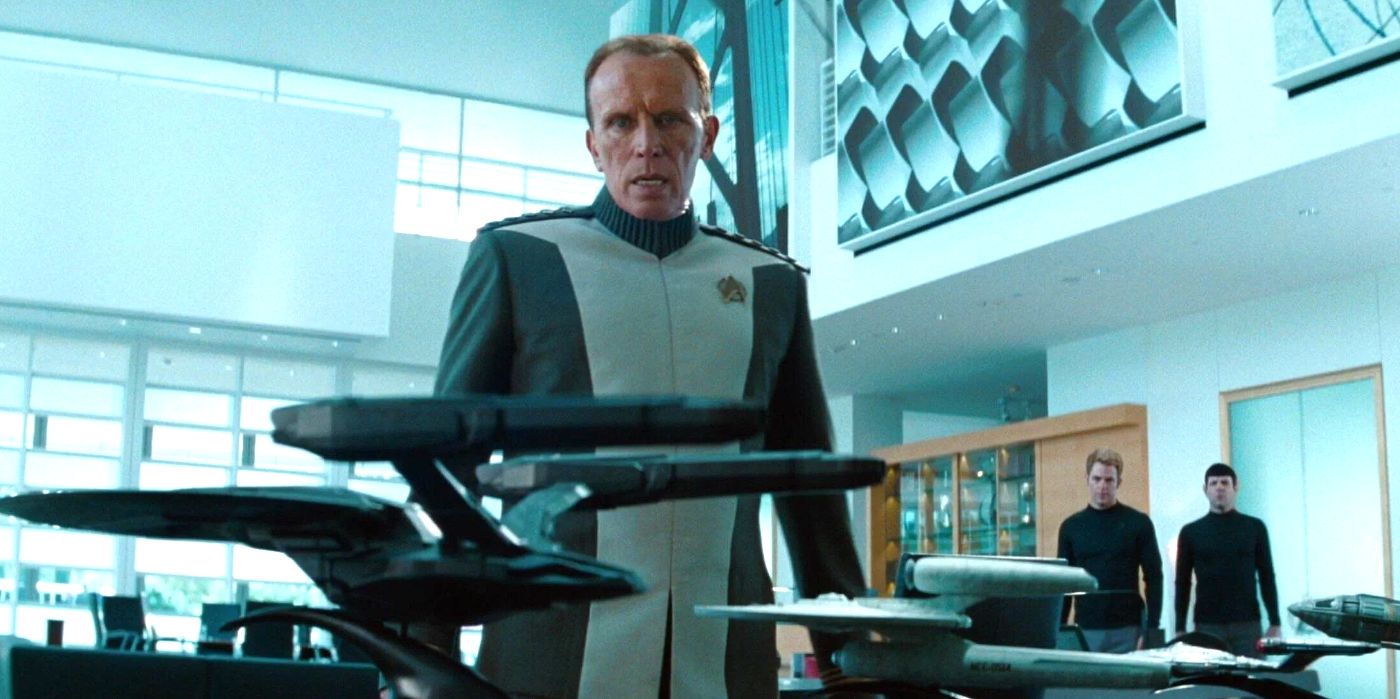One of Star Trek Into Darkness‘ major plot points is that Khan (Benedict Cumberbatch) was manipulated by Section 31, which is a lot like how Dr. Julian Bashir (Alexander Siddig) was a pawn of Section 31 on Star Trek: Deep Space Nine. Section 31, the United Federation of Planets’ secret black ops network, is arguably the most enduring concept DS9 created, and it’s popped up on other shows like Star Trek: Discovery and Star Trek: Lower Decks. But Star Trek Into Darkness seemingly took the Dr. Bashir Section 31 story wholesale and grafted it onto the Kelvin Timeline’s Khan.
In Star Trek Into Darkness‘ backstory, Khan was revived by Admiral Alexander Marcus (Peter Weller), the head of Section 31. Marcus planned to militarize Starfleet to win a war with the Klingons. He found and had Khan revived in order to exploit the genetically-engineered warlord’s savagery. By holding Khan’s followers hostage, Marcus forced Khan to build new weapons like photon torpedoes and the Dreadnought-class USS Vengeance until Khan rebelled. This is awfully similar to how Sloan (William Sadler) tried to recruit Julian on DS9 after Section 31 learned Dr. Bashir is genetically-engineered. During the Dominion War, Sloan manipulated Bashir into his plot against the Romulan Tal Shiar, and he wanted Deep Space Nine’s Doctor to play a key role in the defeat of the Dominion.
Why Section 31 Needed Bashir And Khan

In Star Trek Into Darkness and Star Trek: Deep Space Nine, the driving idea behind Section 31’s plot was to take advantage of the genetically-engineered men in their midst. Dr. Bashir’s admission that he is an Augment meant that he possesses heightened intelligence that could be invaluable to Section 31. Indeed, Bashir once attempted to guide a group of genetically-engineered misfits and the Doctor briefly sided with their belief that the Federation was doomed to lose the Dominion War. Bashir is also a high-ranking Starfleet Officer on DS9, which was a major strategic focal point of the war. Bashir’s access and intelligence made him a major prize for Section 31.
It’s hard to not see the Bashir parallels with Star Trek Into Darkness‘ Section 31 and Khan story. Admiral Marcus operated under the identical belief that a genetically-engineered superman like Khan could teach a militarized Starfleet how to destroy its enemies. Marcus exploited Khan even worse than Sloan did Bashir and, in both the film and DS9‘s cases, Section 31 made enemies out of the Augments they recruited. The key difference is that Bashir is a good-hearted person while Khan is an irredeemable villain. While their endings differed, Section 31 ultimately didn’t get what they wanted from either Khan or Bashir.
What Else Star Trek Into Darkness Stole From DS9

Along with Section 31 manipulating Augments, Star Trek Into Darkness’ plot line of the evil Admiral Marcus plotting a military takeover of Starfleet echoes Star Trek: Deep Space Nine season 4’s story of Admiral Layton (Robert Foxworth) attempting a military takeover of Earth. Layton was terrified of the Dominion threat to the Terran homeworld, especially after four Changelings made it to Earth and began to cause havoc. Layton’s insidious coup attempt was prevented by Captain Benjamin Sisko (Avery Brooks) just as the USS Enterprise’s Captain James T. Kirk (Chris Pine) and Spock (Zachary Quinto) stopped Khan and Marcus.
The similarities between Star Trek Into Darkness and DS9′s “Homefront” and “Paradise Lost” season 4 episodes were called out by DS9‘s executive producer Ira Steven Behr in Mark A. Altman and Edward Gross in the Star Trek oral history, The Fifty-Year Mission: The Next 25 Years: “To a large degree, [Abrams] redid [DS9’s] plot in Star Trek Into Darkness. I wish they had done it better, actually.” But Star Trek Into Darkness duplicating that pivotal DS9 story as well as the idea of Section 31 trying to use genetically-engineered supermen for nefarious ends does speak to how influential Star Trek: Deep Space Nine really is.




